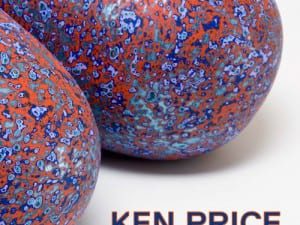At times, other mediums of art are experienced through photography. David Evans cites examples of works such as R. Mutt’s Fountain (1917) as seen through Alfred Stieglitz’s photograph The Lovers (1988) and Marina Abramovic’s 90 day performance with Ulay, also conveyed through photography. Whether one agrees the photographic medium can sufficiently portray sculpture and performance art or rather that the image subtracts the aura from a piece is left to be debated. However, it is in Tom Lovelace’s interdisciplinary practice that he challenges the traditional definitions of art forms. In an amalgamation of sculpture, performance and photography, various media is married within his work. This is particularly exemplified in This Way Up, Lovelace’s solo exhibition at Flowers Gallery, London.
Trained as a fine art photographer, Lovelace focuses his lens on materials – often found objects – that are slightly austere in their utilitarian state, often examining both industrial and domestic items. These everyday materials are altered within contextual frameworks to question standard identity and utility. Through his final photographs, the artist is able to present observations on timing , lighting, functionality and form. This Way Up – a title referencing the instructions from cardboard packaging – hints at Lovelace’s ways of exploring what exists and what has yet to be discovered; what is true and what can be given new meaning.
In the works Monteluco Sole (2013) and Stargazing on Black (2015) sculpture is collapsed, both visually and conceptually, into the two-dimensional picture plane. Lovelace refers to this formal reduction as a “controlled slippage” into minimalism and abstraction. The control is apparent, and the strength is in the subtleness. Aesthetically, the photographs themselves are strong pieces, with their graphic elements contributing to their appeal.
Lovelace’s means of transcending the boundaries of artistic mediums is demonstrated by employing cross-references of his own manipulations, objects and images. The collection on display of his provisional plinths flattened to photographs are a progression from his recent series, In preparation. This Way Up is not just a presentation of sculpture-turned-photography, nor is it necessarily a study of photography as sculpture. While the featured structures are not present outside of the photographic medium, Concrete sculpture and gold paint stands as a physical reminder of the tangible aspects of sculpture and the weight it carries as its own separate medium. Its minimalism stays in tune with Lovelace’s body of work on view, and at the same time is a pleasant juxtaposition to the Untitled Red (2014) works.
Untitled Red at first seems as though a selection of canvases have had a wash of dark red paint to produce their lightly saturated effect. These works are in fact natural photograms, another instance where Lovelace manipulates traditional mediums, paradoxes included. These works were created with sections of felt from the exterior walls of a theatre in Umbria, Italy, where over time the fabric soaked in the sun’s rays, leaving traces of the signage once on them. Lovelace re-contextualises the panels by re-framing them and placing them under ultra-violet protected glass to retain their timelessness. Perhaps attributed to Lovelace’s residency in Italy studying photograms and the readymade, this work encompasses both in the artist’s signature subtle and elegant style. Beyond the minimalism, Lovelace’s art has a deeper conceptual value, which lends the opportunity for curiosity and enquiry.
Ashton Chandler Guyatt
Tom Lovelace: This Way Up until 16 May Flowers Gallery, Kingsland Road, London.
Credits
1. Tom Lovelace, Edition 10, courtesy of the artist and Flowers Gallery.





